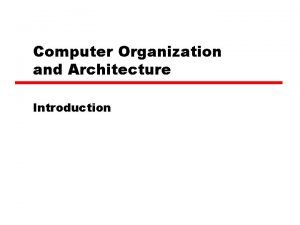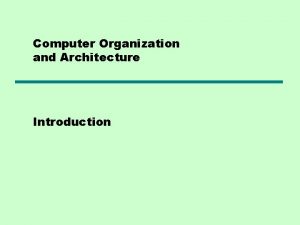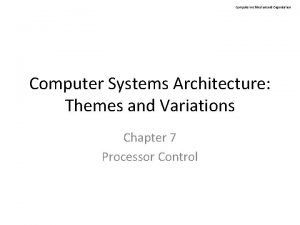Computer architecture and computer organization Computer architecture and






- Slides: 6

Computer architecture and computer organization

Computer architecture and computer organization n n In describing computer systems, the distinction is often made between computer architecture and computer organization. It is difficult to give precise definitions for each of these terms, but a consensus exists about the general areas covered by each.

Computer architetcure n n Computer architecture refers to those attributes of a computer system, which are visible to a programmer, in other words, those attributes that have a direct impact on the logical execution of a program. Computer organization refers to the operational units and their interconnections that realize the architectural specifications.

Attributes n Architectural n n instruction set number of bits used to represent various data types I/O mechanisms memory addressing techniques n Organizational n n number and types of available execution units employed instruction issue and completion policies numbers and sizes of various internal registers, buffers and queues type, size and organization of cache memory

Example n Architectural issue: A decision, whether a computer has a multiply instruction or not n Organizational issue: A decision, whether that instruction is implemented by a dedicated multiply functional unit or by the repeated use of an add functional unit

Importance of the decision n The organizational decision may be based on n n the anticipated frequency of use of the multiply instruction the relative speed of the two approaches the cost and physical size of the dedicated multiply unit There are many x 86 architecture compatible processors, but their performance and price differs significantly
 Difference computer organization and architecture
Difference computer organization and architecture Process organization in computer organization
Process organization in computer organization Computer organization and architecture 10th solution
Computer organization and architecture 10th solution Iit kharagpur virtual lab
Iit kharagpur virtual lab Introduction to computer organization and architecture
Introduction to computer organization and architecture Computer organization & architecture: themes and variations
Computer organization & architecture: themes and variations Computer organization and architecture 10th edition
Computer organization and architecture 10th edition











